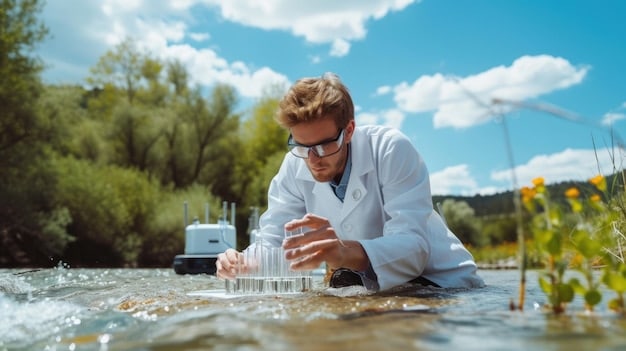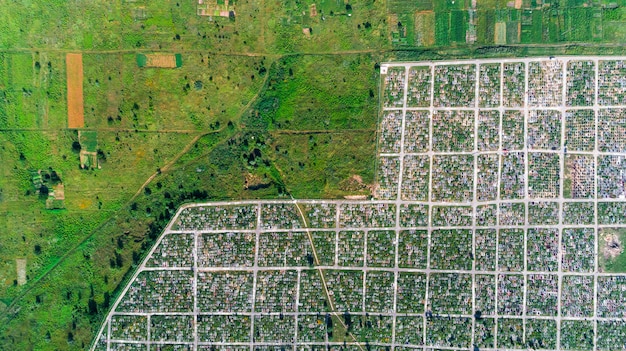State Environmental Regulations: Changes and Impacts for You

State environmental regulations are undergoing significant changes, impacting various aspects of life, from the air we breathe to the water we drink, and influencing business operations and individual responsibilities across the United States.
Navigating the evolving landscape of **state environmental regulations: what’s changing and how will it affect you?** can be complex, but understanding these changes is crucial for residents, businesses, and policymakers alike. These regulations shape our communities, economies, and the natural world around us, making it essential to stay informed and adapt accordingly.
Understanding the Shifting Sands of State Environmental Regulations
State environmental regulations are constantly evolving in response to new scientific findings, technological advancements, and changing societal priorities. These regulations aim to protect natural resources, public health, and the overall environment within each state’s borders.
Keeping abreast of these changes is vital for businesses, individuals, and government entities. Failure to comply with updated regulations can lead to fines, legal repercussions, and damage to both the environment and public image.
Key Drivers of Regulatory Change
Several factors contribute to the dynamic nature of state environmental regulations, highlighting the need for continuous monitoring and adaptation.
- Climate Change Concerns: States are increasingly enacting regulations to mitigate greenhouse gas emissions and adapt to the impacts of climate change, such as rising sea levels and extreme weather events.
- Emerging Contaminants: New scientific research often identifies previously unknown contaminants in water, air, and soil, prompting states to develop regulations to address these emerging threats.
- Federal Policy Shifts: Changes in federal environmental policies can influence state regulations, either encouraging states to adopt stricter standards or creating a vacuum that states feel compelled to fill.

Ultimately, understanding the drivers behind these regulatory shifts enables stakeholders to anticipate future changes and proactively adjust their practices.
Air Quality Regulations: What States Are Doing
Air quality regulations are a critical component of state environmental protection efforts, designed to reduce pollution and safeguard public health. These regulations vary significantly from state to state, reflecting unique geographical challenges, industrial activities, and policy priorities.
Many states are implementing stricter emission standards for vehicles, power plants, and industrial facilities to combat air pollution. This includes adopting California’s vehicle emission standards, investing in renewable energy sources, and promoting energy efficiency measures.
Notable State Initiatives
Several states are leading the way in innovative air quality management, serving as models for others to follow.
- California: The Golden State has long been a pioneer in air quality regulation, setting ambitious goals for reducing greenhouse gas emissions and promoting zero-emission vehicles.
- New York: New York is investing heavily in renewable energy and energy efficiency to reduce its reliance on fossil fuels and improve air quality.
- Massachusetts: Massachusetts has implemented a cap-and-trade program to reduce greenhouse gas emissions from power plants and other large sources.
While the specific approaches may differ, the underlying goal remains the same: to ensure clean and healthy air for all residents.
Water Resource Management: Protecting Our Precious Resource
Water is an essential resource, and state governments play a crucial role in protecting its quality and availability. Regulations governing water resource management address a wide range of issues, including pollution control, water allocation, and conservation.
States are increasingly focused on reducing nonpoint source pollution from agricultural runoff, urban stormwater, and other diffuse sources. This involves implementing best management practices, promoting water-efficient irrigation techniques, and restoring riparian buffers.
Addressing Key Challenges
Water resource management faces several pressing challenges that require innovative and collaborative solutions.
- Drought: Many states are grappling with the impacts of prolonged drought, leading to water shortages and increased competition for limited resources.
- Aging Infrastructure: Aging water and wastewater infrastructure can lead to leaks, contamination, and inefficient water use.
- Emerging Contaminants: New contaminants, such as pharmaceuticals and microplastics, are increasingly being detected in water sources, posing potential risks to human health and the environment.
Waste Management and Recycling: Reducing Landfill Waste
Effective waste management and recycling programs are essential for reducing landfill waste, conserving resources, and minimizing environmental pollution. State regulations in this area typically address issues such as landfill design, hazardous waste disposal, and recycling mandates.
Many states are implementing “zero waste” initiatives, aiming to divert as much waste as possible from landfills through composting, recycling, and waste reduction strategies. This involves promoting extended producer responsibility, encouraging the use of reusable materials, and educating the public about waste reduction techniques.
Strategies for Success
Successful waste management and recycling programs often incorporate a combination of regulatory requirements, economic incentives, and public education campaigns.
- Extended Producer Responsibility: This approach holds manufacturers responsible for the end-of-life management of their products, encouraging them to design products that are easier to recycle or reuse.
- Deposit-Refund Systems: These systems incentivize consumers to return beverage containers for recycling by offering a small deposit refund.
- Public Education: Educating the public about the benefits of recycling and composting can significantly increase participation rates and reduce waste generation.
Land Use and Conservation: Balancing Development & Preservation
Land use and conservation regulations play a crucial role in balancing the competing demands of development and environmental preservation. States use a variety of tools, such as zoning ordinances, conservation easements, and land acquisition programs, to manage land use and protect natural resources.
Many states are prioritizing smart growth principles, encouraging development in existing urban areas and protecting open spaces, farmland, and critical habitats. This involves promoting mixed-use development, investing in public transportation, and preserving natural areas through conservation easements and land trusts.

Innovative Approaches to Land Management
Several states are pioneering innovative approaches to land management, demonstrating how to balance development and environmental protection effectively.
- Cluster Development: This approach allows developers to build homes on smaller lots while preserving larger areas of open space.
- Transfer of Development Rights: This system allows landowners in designated conservation areas to sell their development rights to developers in designated growth areas.
- Conservation Easements: These voluntary agreements restrict future development on a property, protecting its natural resources and scenic values.
By carefully managing land use, states can protect critical ecosystems, maintain biodiversity, and enhance the quality of life for their residents.
Enforcement and Compliance: Ensuring Regulations Are Followed
Effective enforcement and compliance are essential for ensuring that environmental regulations are followed and that polluters are held accountable. State environmental agencies employ a variety of enforcement tools, including inspections, permits, fines, and legal actions, to deter violations and promote compliance.
States are increasingly using data analytics and technology to improve enforcement efficiency and effectiveness. This includes using remote sensing technologies to detect pollution violations, developing online permitting systems, and creating public dashboards to track compliance rates.
Promoting a Culture of Compliance
In addition to enforcement actions, states are also working to promote a culture of compliance through education, technical assistance, and voluntary programs.
- Compliance Assistance Programs: These programs provide businesses and individuals with the information and resources they need to comply with environmental regulations.
- Environmental Audits: These voluntary assessments help businesses identify and correct potential environmental problems.
- Incentive Programs: These programs reward businesses and individuals for adopting environmentally sound practices.
By fostering a collaborative approach to environmental protection, states can achieve greater compliance and improve environmental outcomes.
The Impact on Businesses: Navigating the Regulatory Landscape
State environmental regulations can have a significant impact on businesses, affecting everything from operating costs to product design to permitting requirements. Understanding these regulations and staying up-to-date on changes is crucial for businesses to remain competitive and avoid costly penalties.
Businesses can proactively manage their environmental risks by implementing environmental management systems, conducting regular audits, and engaging with state environmental agencies. This includes investing in cleaner technologies, reducing waste generation, and promoting energy efficiency.
Resources for Businesses
Many states offer resources and assistance to help businesses navigate the environmental regulatory landscape.
- Small Business Environmental Assistance Programs: These programs provide free and confidential assistance to small businesses on environmental compliance issues.
- State Environmental Agencies: These agencies offer a wealth of information on environmental regulations, permitting requirements, and compliance assistance resources.
- Industry Associations: These associations provide industry-specific guidance on environmental regulations and best management practices.
| Key Point | Brief Description |
|---|---|
| 🌍 Climate Action | States are aggressively tackling climate change through renewable energy and emission reductions. |
| 💧 Water Protection | Regulations are tightening to safeguard water quality and ensure sustainable water usage. |
| ♻️ Waste Reduction | States are pushing for “zero waste” through enhanced recycling and waste diversion programs. |
| 🏢 Business Impact | Businesses need to stay informed and adapt to evolving environmental compliance requirements. |
Frequently Asked Questions
▼
The main goals include protecting public health, preserving natural resources, and minimizing pollution’s impact on ecosystems. Regulations cover air and water quality, waste management, and land use.
▼
Regulations can affect operational costs, require investments in cleaner technologies, and necessitate obtaining permits for specific activities. Compliance ensures sustainable practices and avoids penalties.
▼
Individuals can reduce their carbon footprint by conserving energy, recycling, using public transport, and supporting environmentally friendly products. Staying informed and advocating for policies helps too.
▼
Regulations are updated periodically, driven by new scientific findings, technological advancements, and policy changes. Monitoring updates from state environmental agencies is crucial.
▼
Information is typically available on the website of your state’s environmental protection agency. Resources include regulation summaries, compliance guides, and contact information for inquiries.
Conclusion
Staying informed about the evolving **state environmental regulations: what’s changing and how will it affect you?** is crucial for everyone. By understanding these changes and proactively adapting our practices, we can collectively contribute to a healthier environment and a more sustainable future for generations to come.





